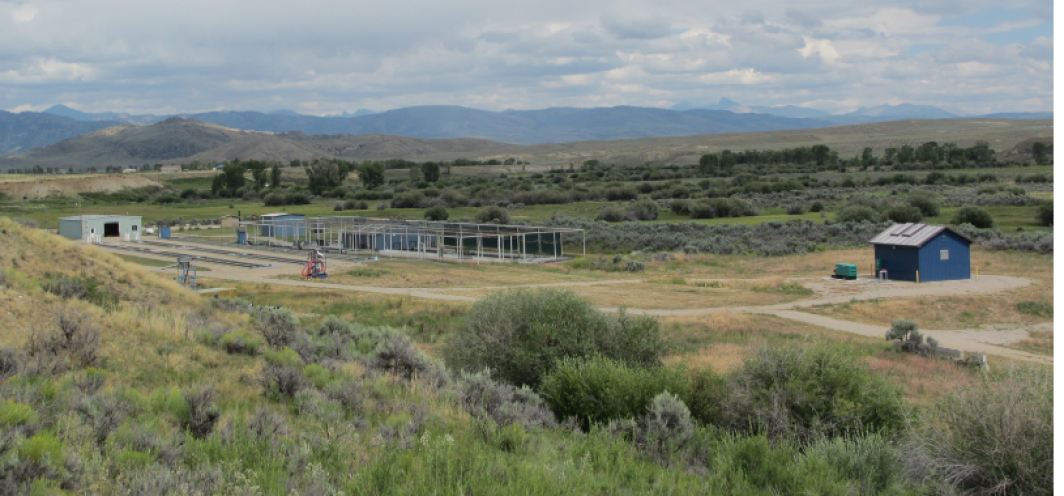Hatchery information
Built on the East Fork River along the west slope of the Wind River Mountains, the Boulder Rearing Station is only a few miles from U.S. Highway 191 south of Pinedale. The facility sits on 448 acres purchased by the Wyoming Game and Fish Department and began operations in 1952.
Hours
Open to the public 8 a.m.- 5 p.m. daily.
Hatchery broodstock
The main focus of the Boulder Rearing Station is care of the fall spawning rainbow trout broodstock.
Boulder Rearing Station also raises brown trout, Colorado River cutthroat trout, kokanee salmon and occasionally golden trout.

History
Boulder Rearing Station sits on 448 acres of land purchased by the Wyoming Game and Fish Department and began operations in 1952.
In 1992 the facility added an isolation unit. This building is used to hatch eggs from wild broodstocks with an unknown pathology. Once the eggs hatch and the fish reach a size of 2 inches long, the state's pathologist will test the fish. If the fish are deemed specific pathogen-free they can leave the isolation facility. The building aids in the biosecurity of the rest of the facility.
In 1999 the spring source of the facility was fully enclosed.
The following year a new brood facility was built, and the broodstock was moved from the original earthen ponds into concrete rearing units. This also was done for biosecurity purposes to break up the life cycle of whirling disease.
In 2021 a large pump house was built to help mitigate occasional flooding during the spring runoff. This aids in preventing the adjacent East Fork River from possibly contaminating the facility with pathogens.







